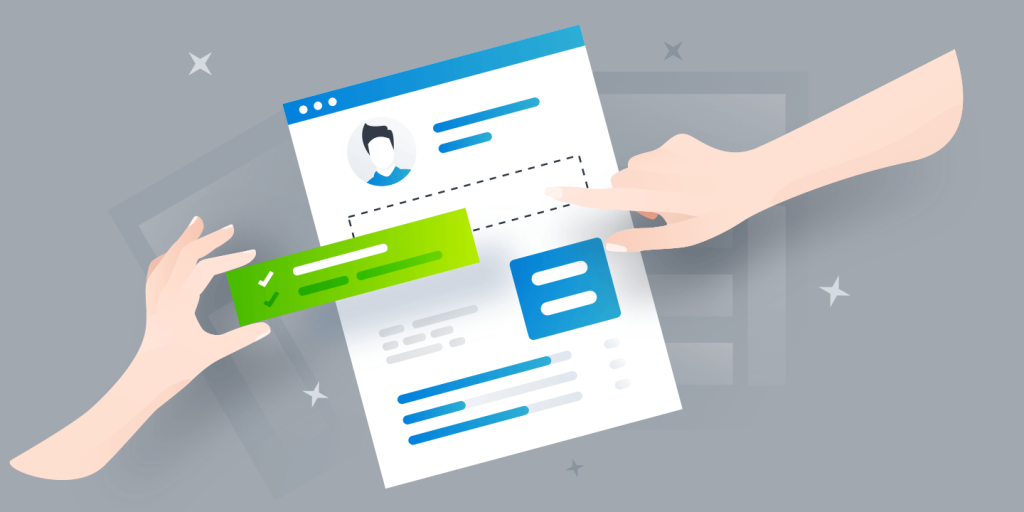You never know—one of your now-rejected candidates may be an excellent fit for one of your roles in the future!
Before the pandemic, every corporate job attracted about 250 applicants. Of those, anywhere between four and six would make it to the final interview, and only one would get the job. In a post-pandemic world, there are over 12.6 million unemployed people in the United States alone. That means the number of applicants is even higher. So are the rejections that go with them.
When you’re rejecting so many candidates every day, it starts to get challenging to remain human. You get desensitized and may even forget that the people you are dealing with on the other end are just that: people.
Now, more than ever, it’s essential to be kind. Check yourself before you respond to any applicant, no matter what their stage. Here’s a checklist you can use to go through your responses and craft templates that work the best for your company and help your candidates still feel valued, even in rejection.
Start your day
with great
quality
content
Best practices for rejecting applicants
If you can create a template to use and regularly modify for each of your candidates, it will make each rejection letter a bit easier and a bit more straightforward. Consider the following best practices as you go and create something that works perfectly for you and your team.
1. Let them know quickly
Many people like to wait until they’ve found or hired the best candidate before notifying any other candidates that they won’t be moving forward. Don’t do that. As soon as you know that the person you’re reviewing or talking to isn’t the best candidate for your team, let them know. Depending on where they are in the interview process, this can be via email or phone. If they’re just in the beginning stages of application review or a phone screen, you’re good to email. Beyond that: give them the courtesy of a phone call.
2. Personalize your rejection
Templates make things much more manageable and assure that you address everything that you need to in each rejection. Leave sections in your templates for personalization. Mention the candidate’s name in the opening and sign the message with your own. Take ownership over the rejection, rather than just hiding behind your company’s name. If you’ve spoken with them or they’ve gone through the process, mention something from your conversation if you can. Providing personal details helps the candidate feel like they are more than just a number to you and can soften the rejection blow.
3. Make it short and sweet
No one wants to read a novel about why they aren’t getting a job. Keep your rejection letter short and sweet. One to two paragraphs that include all of the critical information will suffice. Let them know that they won’t be moving forward, that you appreciated their time, add any additional information that you feel is necessary, and then move on. If they reach back out for more information, try to keep that quick and concise as well.
4. Be honest
If you can be honest in your rejection, people won’t have to reach back out and ask why they aren’t moving forward. Take time to chat with your HR or People team about what you can or can’t share regarding constructive insights. Try to offer as much information as you can, though. It will help create a better impression of your company with the candidate and help them move forward. The more insights you can offer, the more potential they have for their next interview to be the one that works out.
Ask for insights on your process
Just like they’re curious about what could have gone better, you should be too. Ask people that run through your process what they liked and didn’t like. Ask them what felt awkward or if there was anything that you could have improved. By asking for insights, you show them that you value their experience, but you also get the opportunity to hear different perspectives on how you could improve your interview process.
Rejection Letter Templates
Now that we’ve broken down the things to consider and include when writing a rejection letter, here are three templates for you to use. The type of response you send after the phone screen versus after a conversation with them should be different. Similarly, you should call them if you’ve had an interview or taken a substantial amount of their time.
Template to send to a candidate that has applied but hasn’t yet reached the phone screen:
Hey there [Name],
Thanks so much for taking the time to apply for [The Role] at [Your Company]. We really appreciate your interest.
We’ve had a chance to review your qualifications, and while you have an impressive background, we have ultimately decided to move forward with other candidates at this time.
I’m happy to stay in touch should anything change or other opportunities with [Your Company] come about that might fit your background.
Thank you again for your time and interest in [Company]—best of luck in your search.
Thanks,
[Your Name]
If you’ve reviewed their credentials, scheduled a phone screen, and then decided that they aren’t a good fit, the template changes slightly:
Hi [Name],
Thank you for taking the time to speak with me and for allowing us to consider you for a position with [Company]. While you have an impressive background [note something that you liked about your conversation], we have ultimately decided to move forward with other candidates for the role.
I’m happy to stay in touch should anything change or other opportunities with us come about that might fit your background as we continue to scale.
Again, thank you so much for your interest in [company], and best of luck with your search.
Thanks,
[Your Name]
When rejecting a candidate after a longer-form interview or conversation, it’s a best practice to reach out over the phone. Lead your discussion off by letting them know that you won’t be moving forward.
Continue by saying that you appreciate their time and energy and keep them in mind for future roles. If you’d like to, follow up with them via business email with something like the following:
Hey there [name],
Thanks for speaking with me. I wanted to reiterate that I’m grateful for the time and energy you put into the interview process. While it didn’t work out for this role, I’m happy to keep you in mind for future positions at [Company].
Please let me know if there’s anything else I can help with, and good luck in your job search.
Thanks,
[your name]
Keep it human
Everyone knows the Golden Rule: treat others as you’d like to be treated. That goes doubly when you’re rejecting candidates in a hot job market. Give people their answers quickly and keep it short and sweet. If they ask for feedback on what they could have done better or how they could change their resume, give them as much information as you can. Similarly, ask for their insights on what you could have done better. It never hurts to improve your processes, even if you aren’t moving forward with them.
Treat your candidates like humans. Personalize the templates that you use, and be as open and receptive as possible. Building relationships rather than breaking them is one of the best ways to continue to ensure your business’s health and stability.
3 Templates for the Perfect Rejection Letter
We prepared craft templates that work the best for your company and help your candidates still feel valued, even in rejection.











